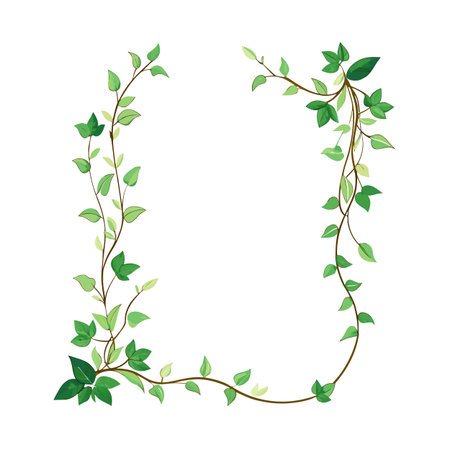Introduction: The New Moon’s Allure in British Folklore
Throughout the rolling landscapes of the United Kingdom, the new moon has long held a special place in the hearts and minds of rural communities. Steeped in folklore, this lunar phase was traditionally believed to usher in fresh beginnings, quietly influencing the rhythms of both gardening and agriculture. In villages from Cornwall to the Highlands, stories passed down through generations reveal how people once turned their gaze skyward, seeking guidance from the waxing crescent as they planned when to sow seeds or tend to livestock. This enduring fascination with the new moon is not merely a relic of the past; even today, its subtle influence can be found woven into rural rituals and seasonal customs. By exploring the cultural and historical significance of the new moon across Britain, we gain insight into how age-old beliefs continue to shape modern practices—bridging the gap between ancient wisdom and contemporary rural life.
2. Traditional Practices: Planting by the Lunar Cycle
For centuries, British gardeners and farmers have looked to the sky for guidance, especially during the New Moon. This lunar phase has long been woven into the rhythm of rural life across the UK, with traditions passed down through generations. The belief that the moon influences plant growth is not merely folklore; it has shaped practical routines in allotments, gardens, and fields from Cornwall to Cumbria.
Age-Old Customs and Seasonal Rhythms
The alignment of agricultural tasks with lunar phases can be traced back to Celtic traditions and medieval farming calendars. Many believed that seeds sown during a waxing moon (from new to full) grew faster and produced stronger crops. Conversely, the waning moon was seen as a time for pruning or harvesting root vegetables. This wisdom was not confined to grand estates but was part of everyday life for smallholders and cottage gardeners alike.
Lunar Cycle Activities in Traditional British Gardening
| Lunar Phase | Gardening/Farming Activity |
|---|---|
| New Moon | Begin planting above-ground crops (lettuce, peas, beans) |
| First Quarter (Waxing) | Sow seeds expected to bear fruit above ground |
| Full Moon | Transplant seedlings, water plants, harvest leafy greens |
| Last Quarter (Waning) | Plant root crops (carrots, potatoes), prune trees and bushes |
Sowing and Harvesting: Rituals Rooted in Experience
British gardening folklore often involved communal activities—neighbours sharing knowledge about the best dates for sowing peas or setting potatoes. In rural villages, timing was everything; missing the “right” moon could spell disappointment at harvest. Even today, some gardeners consult traditional almanacs or tune into local gardening shows on BBC Radio 4 for advice rooted in these old patterns. While scientific evidence remains mixed, many find comfort and success by aligning their gardening efforts with lunar wisdom—a blend of heritage and hope that continues to shape British soil.

3. Modern-Day Perceptions and Scientific Insights
In contemporary Britain, the relationship between the new moon and gardening or agricultural practices is a topic that often sparks both curiosity and debate. While folklore traditions—passed down through generations—still echo in rural communities, most modern British gardeners and farmers tend to approach the lunar calendar with a measure of scepticism.
Folklore Meets Modernity
Centuries-old customs, such as sowing seeds during the waxing moon or pruning under the new moon’s shadow, are sometimes regarded with nostalgic affection rather than practical conviction. These rituals are seen by some as charming remnants of a bygone era, more closely associated with local heritage than with day-to-day decision-making. For many, these traditions serve as a comforting link to ancestors who worked the same land.
The Shift in Attitudes
Today, British allotment holders and commercial farmers alike often prioritise scientific advice over lunar lore. The widespread availability of weather forecasts, soil testing kits, and advanced agricultural technology has gradually shifted trust from the phases of the moon to data-driven approaches. This pragmatic mindset reflects a broader cultural shift towards evidence-based practice across all aspects of life in the UK.
Current Scientific Understanding
Research into the actual influence of lunar cycles on plant growth remains inconclusive. While some studies suggest minor effects on moisture levels or seed germination rates, most scientists agree that these factors are far outweighed by variables such as soil quality, temperature, and rainfall. The Royal Horticultural Society, for instance, does not endorse lunar gardening as a reliable method for improved yields.
Yet, it is important to acknowledge that psychological factors play a role: following traditional lunar rituals can foster mindfulness and deepen one’s connection to nature—a benefit not easily quantified but valued by many British gardeners today. In balancing old beliefs with modern knowledge, the conversation continues, reflecting both respect for history and an openness to innovation.
4. New Moon Rituals in Today’s British Gardens
In contemporary Britain, the allure of the new moon continues to shape gardening routines and agricultural practices, though often with a fresh twist. While some may see lunar rituals as relics of the past, many UK gardeners and allotment holders are rediscovering and adapting these traditions—merging folklore with practical horticultural knowledge. This blend of old and new reflects both respect for heritage and a keen interest in sustainability.
Blending Tradition with Modern Practice
Across the UK, from rural Cornwall to bustling city allotments in Manchester or London, you’ll find individuals who choose to sow seeds or transplant seedlings during the new moon phase. The reasoning is not solely mystical; many believe the increased gravitational pull at this time encourages moisture in the soil, helping seeds germinate more successfully. For some, these activities are paired with quiet moments of intention-setting or simple reflection—turning routine gardening into a mindful ritual.
Common New Moon Rituals Among British Gardeners
| Traditional Element | Modern Adaptation |
|---|---|
| Sowing seeds under the new moon | Choosing seed types that benefit from increased soil moisture; recording results in a garden journal |
| Blessing tools or soil | Cleaning tools and preparing beds as an act of mindfulness before planting |
| Circular planting layouts (mimicking lunar cycles) | Designing companion-planting beds for biodiversity and aesthetic appeal |
The Allotment Community Connection
New moon gardening has also become a way for allotment communities to come together. Monthly gatherings might coincide with the lunar calendar, providing opportunities to share tips, swap seeds, and encourage each other. These communal efforts help foster a sense of belonging while keeping local traditions alive—albeit with a modern spin.
Practical Tips for Incorporating New Moon Rituals
- Check a reliable lunar calendar to plan key gardening tasks around the new moon.
- Use this phase for sowing leafy greens or starting delicate herbs that require gentle encouragement.
- Create small rituals such as journaling intentions for your plot or inviting neighbours for a cup of tea while working together.
This thoughtful approach allows gardeners across Britain to stay rooted in tradition while cultivating their plots with awareness, adaptability, and a touch of lunar magic.
5. Community, Wellbeing, and the Rhythm of Nature
For many British gardeners and agriculturalists, following the lunar cycles—especially the new moon—offers more than just a planting calendar; it provides a shared rhythm that brings people together. In allotments from Yorkshire to Cornwall, neighbours gather to discuss sowing times, swap stories of moonlit harvests, and collectively anticipate the subtle changes each lunar phase brings. This sense of community can be deeply nourishing, especially in a culture where individualism often overshadows collective experience.
Fostering Mindfulness Through Ritual
Lunar gardening encourages a slower, more attentive approach to tending the land. Instead of rushing through tasks, British growers who observe new moon rituals are invited to pause and notice small shifts—the feel of the soil underfoot, the way dew clings to leaves at dawn. This mindful engagement with nature can reduce stress, enhance mental clarity, and foster a greater sense of wellbeing, echoing longstanding traditions where working with the land was as much about inner balance as it was about food production.
Building Community Roots
The tradition of gathering for new moon seed sowing or communal reflection is experiencing a gentle revival in Britain. Community gardens and urban farms host lunar-themed events, encouraging people to reconnect with each other and their environment. These gatherings offer opportunities not only to share practical tips but also to support one another emotionally—a reminder that wellbeing flourishes when nurtured by connection.
The Ongoing Rhythm
By aligning gardening practices with the cycles of the new moon, British growers tap into a timeless rhythm that links them to past generations and to each other. In this way, lunar gardening becomes more than an agricultural technique; it is a means of cultivating resilience, belonging, and harmony with both community and nature.
6. Practical Guidance: Integrating Lunar Traditions into Your Growing Routine
Actionable Tips for Embracing the New Moon
For British gardeners and farmers interested in exploring the influence of the new moon, weaving lunar traditions into your growing routine can offer a mindful connection to both nature and heritage. Here are some practical steps to help you get started:
1. Plan Your Planting
The days around the new moon are often considered ideal for sowing seeds that grow above ground—think lettuce, peas, or herbs commonly found in British gardens. Use this phase to schedule your planting sessions, tapping into the age-old belief that lunar energy supports growth and vitality.
2. Observe and Reflect
Begin a gardening journal dedicated to lunar cycles. Note any changes in plant development, soil moisture, or pest activity during each phase. Over time, your observations may reveal subtle patterns or simply deepen your appreciation for seasonal rhythms.
3. Ritualise Your Practice
Create small rituals at the new moon—such as a quiet walk through your plot at dusk, reciting traditional British blessings for abundance, or simply taking a moment to express gratitude for the land. These practices can foster mindfulness and make gardening feel more intentional.
4. Connect with Community
Share your experiences with local allotment groups or online forums dedicated to British gardening. Exchanging stories about lunar planting not only preserves folk wisdom but also builds supportive connections with like-minded enthusiasts.
Mindful Reflection Prompts
- How do I feel when working in my garden or field under different phases of the moon?
- What family or community traditions might I revive or adapt to honour the new moon?
- In what ways does aligning my growing practices with natural cycles enhance my sense of wellbeing?
Nurturing Growth Beyond Plants
Integrating new moon rituals is less about strict rules and more about cultivating presence, curiosity, and respect for the land’s ancient rhythms. Whether you’re planting potatoes in Yorkshire or tending wildflowers in Cornwall, let these lunar traditions inspire you to nurture both your crops and your connection to Britain’s rich agricultural tapestry.

